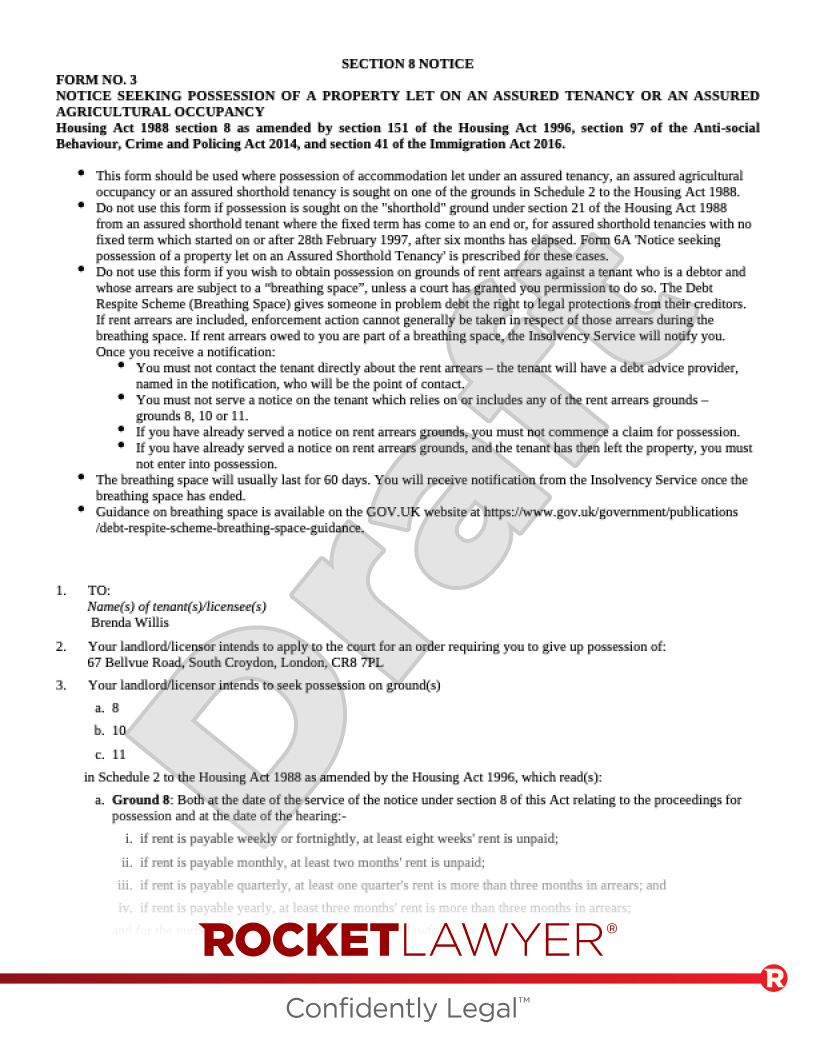| Action | (✔) |
| Give or receive notice and confirm the tenancy end date. Once notice to bring the tenancy to an end has been given, you should confirm the end of the tenancy in writing. Generally, the required notice period to end a tenancy depends on the type of tenancy and when and why the tenancy is coming to an end. This will likely be contained in your Tenancy agreement. If you are asking your tenant to leave the property, the date after which any tenant has to leave the property will typically be set out in an Eviction notice. If the tenant ends the tenancy, they will typically let you know when they plan to move out. Ensure that the tenant provides you with written notice of when and why they are leaving the property. Then, you should confirm their last date in the property, for example in a written letter or by email. |
|
| Familiarise yourself with the rules around tenant abandonment. If the tenant has left the property early without giving notice (ie abandoned the property), you are entitled to continue charging rent and can apply for a court order to make the tenant pay what they owe. | |
| Be aware of what is considered a retaliatory or 'revenge' eviction. This occurs when a landlord tries to evict a tenant who has asked for repairs or complained about the condition of their home. For assured shorthold tenancies (ASTs) that started or were renewed on or after 1 October 2015, a tenant cannot be evicted, unless their landlord proves they're at fault (eg because they didn't pay the rent) or the term of the tenancy has come to an end. |
|
| Advertise the property. If you are planning on finding another tenant to rent the property after the current tenant has moved out you will need to be organised in advertising that the property will be available. However, make sure to communicate with your current tenants if there are viewings that will take place while they are still in occupation. | |
| If your outgoing tenant has requested one, write a Landlord reference letter. This can help a future landlord understand more about your experiences renting to this tenant before they themself choose to rent to them. |
|
| Make sure that you have a copy of your original Inventory. | |
| Carry out an end-of-tenancy inspection. Inspect the property together with your tenant and discuss any issues that need to be addressed before they move out. Specifically consider:
This type of inspection helps landlords and tenants alike, as tenants are more likely to receive their deposit back in full, while landlords need to do less property maintenance between tenancies. It is advisable to carry out a first inspection a couple of weeks before the tenant moves out in case of the need for a second |
|
| If the property is not in satisfactory condition after inspection, give the tenant an opportunity to resolve it. If there is a dispute you can file your case with the tenancy deposit scheme to make a claim to use the deposit to resolve any issues. You will need to ensure you have any necessary evidence to support this claim. You can only take money from the tenant deposit for good reason, for example, if they:
You cannot deduct from the deposit for fair wear and tear resulting from normal use. |
|
| Update the utility companies. You should update your relevant utility companies on the property’s metre readings at the time when the tenant moves out. You will also need to check with them that all the utility bills are up to date. | |
| Check council tax payments are up to date. If the property is going to be empty between tenants, it is you as the landlord who will need to pay the council tax for this period. | |
| Make a handover appointment with your tenant. This will allow you to take back possession of the keys and, if possible, agree on how much of the deposit will be returned and in what time frame. | |
| Release the deposit. After agreeing on and making any relevant deductions, release the deposit to the outgoing tenant within 10 days. If you use a custodial deposit protection scheme, notify them that they need to release the money. If you use an insured scheme, you can pay the tenant and then must notify the scheme that you have released the deposit. |
|
| Do not immediately sell or dispose of any possessions the tenant has left in the property. Before disposing of any of the tenant’s belongings, you should take steps to ensure they no longer want them. You must give reasonable time for any left items to be collected | |
| Conduct another inspection after the tenant has moved out. This will help you see whether there is anything else that needs to be done before the next tenancy. Make any repairs, upgrades or improvements necessary. |
For more information, read Ending your tenancy early and Tenant's and owner's obligations. Ask a lawyer if you have any questions or concerns. If you require assistance evicting a tenant, consider using our Tenant eviction service.




